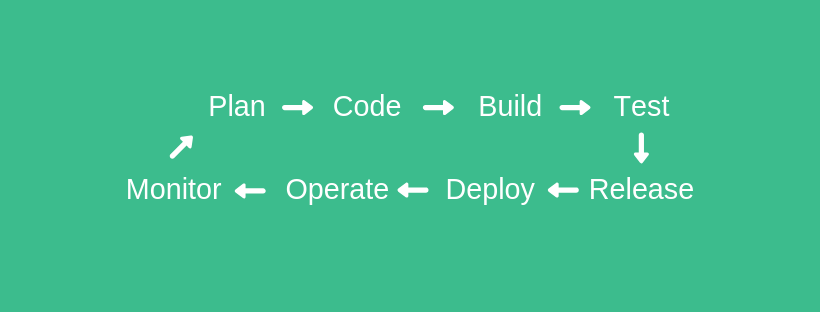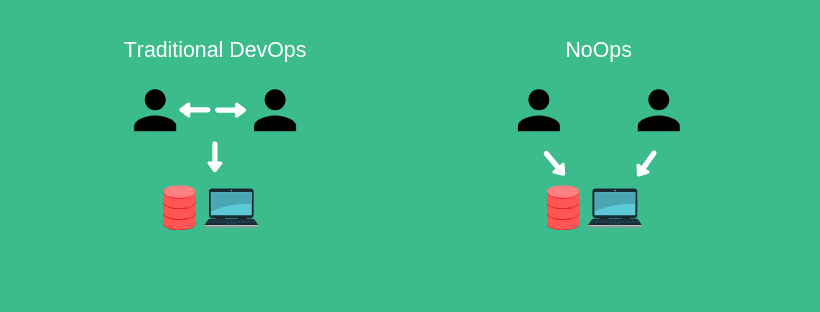What Every Dev Company Needs to Know about NoOps Development
It seems like everything is getting automated these days.
And I mean everything.
Who would’ve thought that we’d be automating development teams, though?
69% of development companies agree that process and automation improvement is a top priority, so it makes sense we’re heading in this direction.
This rise of automation has formed a new development model known as NoOps, which stands for no operations.
The name means that this approach involves no operations input, cutting out the “operate” step of the continuous development model.

That’s right. The developers are capable of launching, testing, and fixing apps on the fly without any interruptions or downtime.
Follow along as I further cover what NoOps is, the benefits of using it, and how to implement it.
What is NoOps?
NoOps is a new development approach that involves relieving developers of needing to constantly work with operations members, speeding up deployment time, testing, and workflow.
It stems from the previously popular model of developers and operations teams working closely called DevOps.
Instead of working together, service providers give development teams the proper cloud infrastructure, patching, backups, and resources to work on their own.

That means programmers no longer require feedback and approval during development, and can operate completely independently.
This also allows the operations department of a company to focus on what they do best: project management, talent acquisition, and so on.
However, NoOps is typically most beneficial for startups that begin with this continuous development model. It is much more difficult to switch to NoOps when you have existing environments, pipelines, and deployment procedures.
As an example, NoOps does not work well for enterprises that are still stuck with a monolithic legacy application. This would require a re-write of most of their codebase to make it fit with the NoOps ideology.
Additionally, if a company adopts NoOps later in the business cycle, they may have to shrink the size of their operations team.
If a startup launches with a NoOps model from the beginning, they have the potential of staying lean for longer. The saved resources can be put towards other aspects of business growth, like marketing.
What Are the Benefits of NoOps?
There are many benefits to be gained by adopting a NoOps model. The first of which is that it maximizes development time.
By not having to go back and forth with operations members, developers can roll out changes, features, and entire apps faster than ever before.
This process is further sped up by providing many preconfigured templates for running a specific type of application, like a Node.js microservice. This means no time is wasted on configuring and securing your application deployment as everything is pre-configured by the template. This kind of easy-to-use experience is also referred to as Developer Experience (DX).
This also implies that hitting milestones will be easier and quicker. With this sped-up development time, companies create opportunity to generate revenue sooner, since the software can be completed ahead of schedule.
Furthermore, NoOps allows developers and operations teams to do what they do best: develop and operate.
Both departments of a business can double down and become more productive thanks to the extra focus and time gained by this continuous development model.
How to Implement NoOps
The simplest way to integrate this methodology is by using a NoOps funnel tool, such as Buddy, that offers managed cloud storage, pipelines, zero-downtime deployments, and automated operations. It is the most convenient and simple solution to get started with NoOps.
Debugging code and some operational tasks will have to remain in-house, but a large chunk of infrastructure will be completely handled on behalf of developers.
Since these services typically allow many users to have individual accounts at once, it enhances collaboration as well.
When you successfully connect with a service provider, it’s recommended to also consider revamping procedures for:
- What the operations team needs to focus on with many tasks now outsourced.
- Project deadlines and expectations since deployments and changes can be completed faster.
Challenges of NoOps
The ideas backing the NoOps movement are sound but NoOps itself is not without its challenges. The idea of NoOps is based on the assumption that automation can handle every use case, and therefore eliminates the need for any human intervention.
What many organizations forget is that containerized services can still fail and need maintenance. From my personal experience, I can tell you that my last microservices-based company had an emergency response team in place during the nights to bring up any container that had crashed (which happened once every 2-3 weeks).
Although you have to consider the element of failure which probably needs human intervention, NoOps is still able to remove the most need for human intervention — DevOps.
Future of NoOps
NoOps will play an important role for many startups and product-as-a-service (PaaS) companies. It helps them go to market quicker, and catch revenue faster.
It also fits well into the agile methodology, in which you have fast releases. NoOps can provide this agility in quickly deploying your product in order to test it.
However, the future may take us even further into Intelligent-Ops, which includes the use of Artificial Intelligence (AI) to manage software deployments. For example, AI could learn patterns that detect common errors or inspect logs to detect failures and learn from this. The first step can be that the AI analyzes logs and detects patterns to report back to the team what possibly went wrong.
Final Thoughts
Only 28% of teams use a continuous development model of any form in general. If you’re one of them, stop dreading deployment and start looking forward to it by taking advantage of NoOps.
NoOps is an excellent choice for any software companies interested in scaling, optimizing development, and automating everyday procedures.
This approach was created out of the DevOps model with the goal of further automation and faster rollouts.
It’s most suitable for startup companies that can form their business around it from the beginning, as it’s more difficult to reshape an entire business once a model like DevOps is already in place.
Contact a NoOps service provider if you believe this is the direction you’d like to take your development team, and start reaping the benefits today.